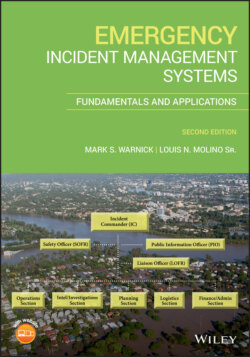Читать книгу Emergency Incident Management Systems - Mark Warnick S., Louis N. Molino Sr - Страница 29
1.4.10 No Interagency Planning
ОглавлениеIn the 1970s, interagency operational planning was overlooked time and again. If there was operational planning between two or more agencies, it was often done haphazardly and/or randomly. Clear and concise operational planning that utilized interagency integration was not usually a priority for the initial agency, or the mutual aid agencies. Tactics were rarely discussed before sending a first responder into characteristically dangerous and often hazardous, operations. Sometimes, this had negative and life‐threatening results.
Prior to the formal creation of IMS methods, it was not unusual for mutual aid agencies to show up and to be told where they were most needed, with no further discussion. Even if they decided to follow those orders, because varying agencies had differing methods to mitigate a given circumstance, these entities could be working on the same incidents utilizing different methods. They were doing what they thought was best, rather than having a specific plan where everyone knew what tactics were being employed.
This would sometimes lead to a disastrous result. Because there are many methods to fighting a fire, each with their own risks, contradictory tactics could, and sometimes would, put firefighters at risk. The previous example about wildland firefighting also fits into this scenario. If one group of firefighters was undertaking a direct attack (using hoses and water) on a wildland fire, and another group of firefighters were fighting it indirectly (creating a fire line and backburning), then the firefighters involved with the direct attack could be trapped between the two fires. This is but one example of how lack of planning sometimes caused more life‐threatening issues.
